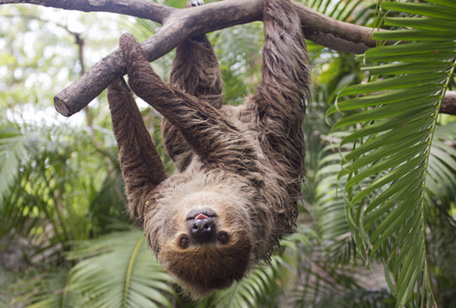
Choloepus didactylus
Venezuela, Cost Rica, Guianas south into Brazil
Least Concern
Vertebrae
Nearly all mammals, from mice to giraffes, have 7 cervical (or neck) vertebrae. There are two exceptions to this rule; Manatees (who have 6), and sloths, who have anywhere from 5 to 10, depending on the species! The reason behind this isn’t entirely clear, but is thought to be caused by an evolutionary shift of the shoulders, ribcage and pelvis. While their abnormal number of neck bones don’t seem to serve an evolutionary purpose, it does make them unique amongst other mammals!
Living Greenhouse
While the hair of sloths is typically brown to gray in color, they often appear green. Each of their hairs has a groove that collects moisture and encourages green algae to grow, which is then further fertilized by moths and their waste. This allows the sloth to, essentially, turn green!
Sloths get several benefits from their relationship with their body-algae, including better camouflage, a water source, and even a portion of their daily calories!
To learn more, download the Linnaeus’s Two-toed Sloth fact sheet.
